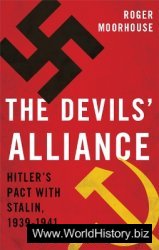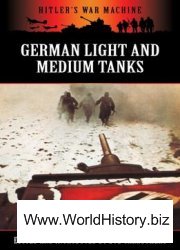Scud missile, nato code name for the Soviet nuclear capable short-range ballistic missile family also known in the West as SS-1. The first missiles, designated 8K11 in the East were deployed on tracked chassis in the mid-1950s. Maximum range was 90 miles (150km). An improved 8K17 Scud-B with a range of 168 miles (280km) was deployed in 1962 on a tracked chassis and from 1965 on a more reliable wheeled launcher. Scud-B is still in service with Warsaw Pact armies and has seen combat in Arab and Iranian hands. Versions have been produced in the Middle East (Egypt used Scud, to little result, in the Yom Kippur War of 1973) including longer-ranged derivatives.
Scutari, siege of (1912-13). Scutari (now Shkoder, Albania) resisted most strongly of all the Turkish positions attacked during the First Balkan War. Montenegrin forces had made no impression on Scutari’s defences before the armistice of December 3 1912 and her Commandant refused to recognize it. In a series of assaults during February 7-9 1913, the Montenegrins succeeded in gaining a foothold within the eastern perimeter, but attacks by Montenegrins reinforced the Serbians on the southwestern side on March 31-April 1 failed. Quarrels caused the Serbians to leave on April 16 but Scutari surprisingly surrendered to the Montenegrins on April 22. The Great Powers had intended Scutari to belong to the new state of Albania, but it required intense international pressure to persuade the Montenegrins to give it up on May 6 1913. SKF.
SD iSicherheitsdienst). The security service of the Nazi Party, founded under Heydrich 1931; staffed entirely by SS; notable for severity of its interrogations.
SE5a, Royal Aircraft Factory (Br, WWI). Single-seat fighter. First production aircraft completed March 1 1917; first squadron (No.
56) to France April 7; operational to end of war, with 18 squadrons. Production, 5,270. One 150/200hp Hispano-Suiza or 200hp Wolseley Viper engine; max. speed 126mph (202kph); two 0.303in machine guns, 1001b (45kg) bombs.
Seacat missile. The Royal Navy’s first point defence surface to air missile which replaced the light gun armament of British warships in the 1960s. A simple command-guided weapon with a range of about 3 miles (5km), it is highly dependent on the skill of its operator, but the latter is helped in later installations by the use of television tracking. Seacat suffered from the problems of all first-generation sam systems, but it probably contributed to some Argentine losses in the Falklands War and has been widely exported.
Sea Dart missile. The Royal Navy’s area defence surface to air missile powered by a ram jet and with a range of over 39 miles (65km). Sea Dart uses semi-active radar homing and did well in the Falklands War, shooting down two helicopters, three Skyhawks, a Canberra and a Learjet reconnaissance aircraft. It is best against high-flying targets, but its capabilities against low-flying threats have been improved. It has a secondary surface to surface capability over reduced range.
Sea Fury, Hawker (Br, late - and post-WWII). Single-seat shipboard fighter. Prototype (F2/43) flew September 1 1944; Sea Fury prototype February 21 1945; first production September 30 1946. Deliveries to squadrons began August 1947. Saw much use Korean War. Used by rn, ran, rcn. Production, 733 for RN, further production and conversions for foreign countries. One 2,480hp Bristol Centaurus 18 engine; max. speed 465mph (748kph); four 20mm cannon, 2,0001b (900kg) external
Ordnance.
Seaman, Lt Gen Jonathan
(b.1911k US. Commander US 1st Infantry Division; promoted to head II Field Force, Vietnam, when it became operational at Long Binh on March 15 1966. Seaman launched Operation “Cedar Falls”, the first corps-sized US mission and the first formally planned major combined operation of US and South Vietnamese forces in the Vietnam War.
“Search and destroy” operations. The US command in Vietnam adopted the term “search and destroy” in 1964 to describe multibattalion operations designed to seek out, encircle and destroy large enemy units. Gen Westmoreland advocated the concept as an offensive alternative to the essentially defensive “enclave strategy”. He applied it mainly against well-established base areas, which communist forces often fought vigorously to defend. Following the 1968 Tet offensive, “search and destroy” gave way to small unit patrolling. See also cordon and search operations.
Sea Skua missile. A British semiactive homing air to surface missile designed to give the Lynx shipborne helicopter capability against small surface combatants. The missile has a range of over 9 miles (15km) and was rushed into service in the Falklands War, during which it seriously damaged at least one Argentine patrol vessel.
Seawolf missile. One of the most effective point defence surface to air systems in the world, Seawolf was designed to give British surface combatants protection from anti-ship missiles. Targets are tracked by radar and automatically engaged, the missiles being command guided to intercept. Television provides optical backup for low angle of sight and surface engagements. The maximum range of the system is about 3—4 miles (5-6km) and a vertically launched version will have longer reach. Seawolf, despite some software problems with crossing targets, distinguished itself in the Falklands, shooting down three Skyhawks on May 12. Later, the system destroyed a Dagger and contributed to the loss of at least one other Skyhawk. EJG.
Second Army (British). Formed in 1943 to be the British element of the Normandy invasion force. After D-Day, it held the Caen sector of the bridgehead before joining the breakout and liberating Brussels and Antwerp in September
1944. It took part in the operations in Holland and captured Hamburg on May 3 1945.
Second Front. Potential Anglo-American invasion of France from 1942 onwards i. e. second to Russian Front.




 World History
World History









